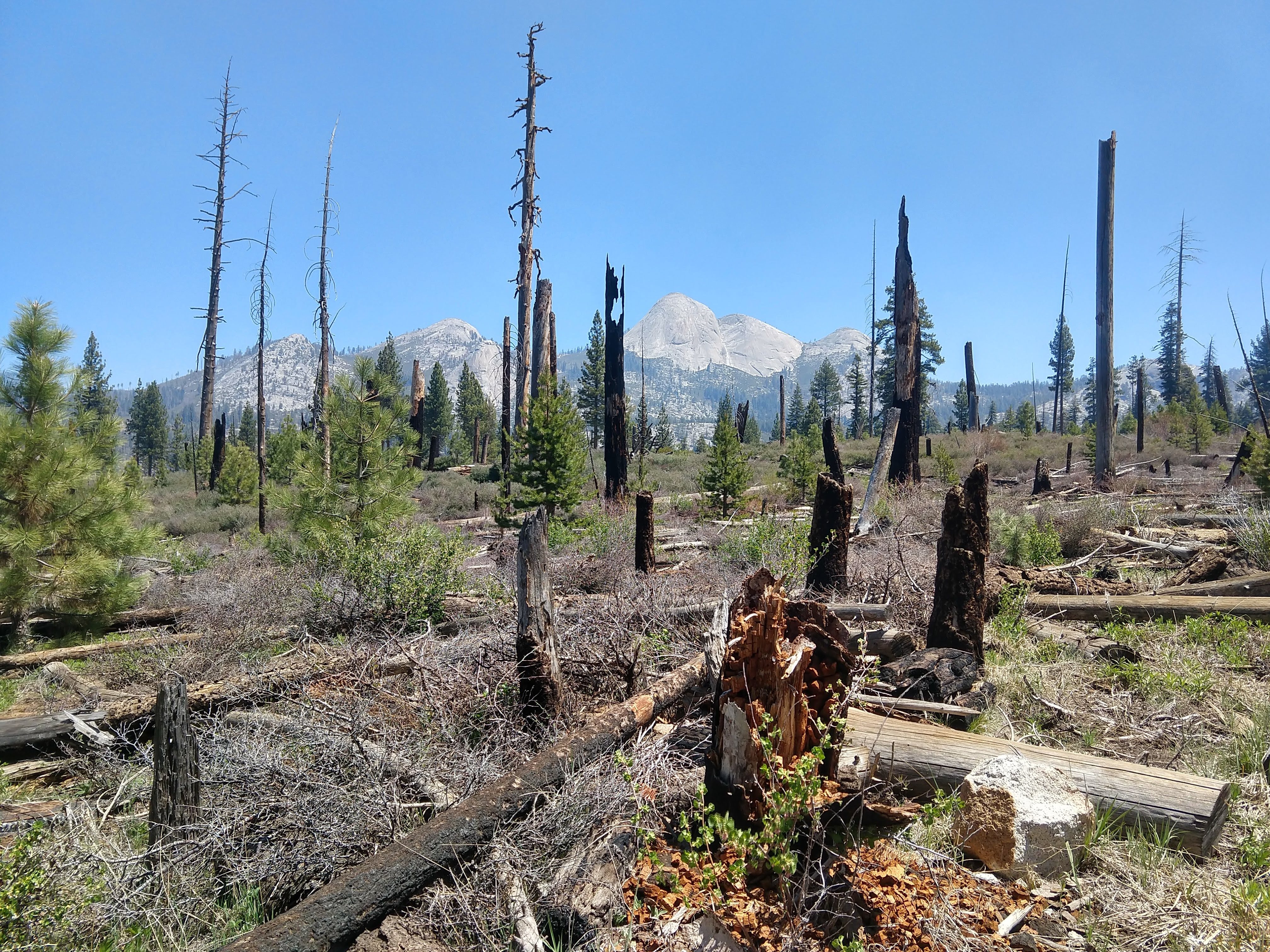In Yosemite National Park's Illilouette Creek Basin, fire use policies have been restoring the natural role of wildfire since 1972. These efforts are increasingly crucial as climate change exacerbates wildfire frequency and severity across the Western US.
Cluster member Gabrielle Boisrame collaborated on research published in "Hydrological benefits of restoring wildfire regimes in the Sierra Nevada persist in a warming climate" which sheds light on an interesting aspect of forest ecology: much like humans breathe and perspire, trees transpire, releasing water from their leaves into the atmosphere. This process is essential for their survival, but in dense forests, excessive transpiration can significantly reduce water availability.
By strategically reducing forest cover through controlled burns, these policies not only reduce wildfire risk but also increase water security by moderating the collective transpiration of trees, akin to regulating breathing in a crowded room to ensure everyone has enough air. The authors of the study emphasize the effectiveness of this approach, stating, "The hydrological impacts of fire use are comparable under observed climate and projected future climates," highlighting its resilience across various climate scenarios.
Amid rising temperatures and changing precipitation patterns due to climate change, the significance of these findings cannot be overstated. While frequent wildfires are a stark reminder of our changing world, the study suggests a synergistic solution: using fire management to balance forest health and water availability. However, adapting Yosemite's fire use policies across the Western US requires careful consideration of regional climate and fire dynamics. This research underscores the need for a nuanced understanding of ecohydrological models and climate predictions, aiming to mitigate wildfire risks and secure sustainable water supplies in the face of climate change.

 Big Data
Big Data